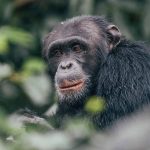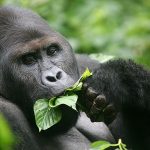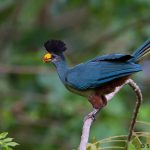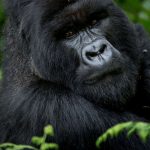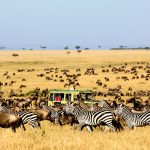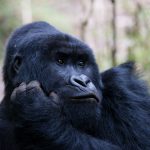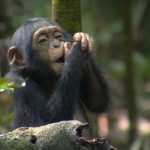
Mount Kilimanjaro Climbing Routes, which is the Best Kilimanjaro climbing route for You?
There are 7 hiking/trekking climbing routes you can use to successfully reach the Kilimanjaro summit, these Kilimanjaro routes differ in length, costs, scenery, difficulty levels, and succession rates
Factors to consider before you choose your Mount Kilimanjaro route
- The time of the year
- Budget available
- Previous hiking/trekking experience
- Fitness level
- Personal preference (preferred Kilimanjaro route)
Tips to know about the Kilimanjaro routes
- The Marangu route: is the only Kilimanjaro route offering hut accommodation
- The Machame route: is the most popular Mount Kilimanjaro climbing route
- The Rongai route: is the easiest and driest route up the Kilimanjaro
- The Shira route: is one you get serious altitude on the first day
- The lemosho route: the most beautiful route up the Kilimanjaro
- The umbwe route: the most demanding and challenging route
- The northern circuit route: the longest and the only route going across the Kilimanjaro
Other Kilimanjaro routes you should know about
- The mweka route: is a descent route.
- The kilema route: the only summit bound Mount Kilimanjaro cycling route (see Kilimanjaro cycling tour)
- Western breach: unsafe and risky, we don’t operate up this route
The Marangu Route
This Kilimanjaro route is also known as the “coca cola route” as it is considered an easy climb because of its comfortable walking path with a very steady, gradual slope (until the last camp) & hut accommodation. However, that is not the case as there is a substantial number of trekkers who don’t make the summit
Here are the reasons why the Marangu route can be a hard climb
- Unprepared trekkers, as most trekkers on this route, consider it easy they don’t do enough to get ready for the challenge
- Many trekkers opt for the minimum mandatory 5 days’ hike which does not allow for sufficient acclimatization, as a result, they get altitude sickness (see 6 days Marangu hike)
- the last day before summit and the summit attempt is long ones each covering about 1000m of altitude difference, so there is no enough time to recover and acclimatize.
- The path to the summit is steep
- unfavorable weather as you head to the summit
Tip: adding an extra day is essential to increase your summit chances.
Characteristics of the Marangu route
- Gradual path
- Hut accommodation, camping is not possible
- Popular among hikers with less experience
- Requires minimum of 5 days, 1 extra day is recommended for acclimatization
- Slightly and comparatively cheaper, you need no camping equipment, an extra porter and can be done for the least days (5)
- The shortest hike duration all other routes have a minimum of at least 6 days’ mandatory requirement
- Least scenic as you ascend and descend on same route
Reasons why you should choose the Marangu route
- You can’t under any circumstance camp for 4 or 5 nights, but the huts don’t offer any luxury or many amenities, you only get a mattress, pillow, bunk bed and get to eat in a dining hall
- If budget is the ultimate consideration and you don’t care about larger crowds or scenery, Marangu is the cheapest option
The Machame Route
This Kilimanjaro route is also known as the “whiskey route” a reference to the Coca-Cola route (Marangu route) as it is considered tougher, it is indeed a more difficult climb but does have a higher success rate than the Marangu route, especially when doing a 7 days’ hike (see 7 days Machame hike)
The 7 days’ hike unlike the 6 days’ hike gives you a short day before the summit attempt leaving you with enough time to recover, acclimatize and stay ready
Why the Machame route is considered tougher than the Marangu route
- It is more strenuous, the trail is steeper, it has many ups and downs, crossing succession of valleys and ridges that’s why it is done for a minimum of 6days one day more than the Marangu route but can be demanding and tiring for trekkers with less experience
- Crossing the barranco wall, it is a steep one-and-a-half-hour climb that will require you to occasionally use your hands for balance. (it sounds and look difficult than it is)
Characteristics Machame of the route
- Steeper path
- Camping accommodation
- Popular among trekkers
- Requires a minimum of 6 days, 1 extra day is recommended for acclimatization
- Spectacular scenery, the Shira plateau, the lava tower, the Barranco wall are amazing
- crosses the Barranco wall
- Considered one of the most scenic, starting from the west, circle kibo on the south and then descending on the mweka route in the southeast
Tip: If you are confident in your ability to hike in difficult terrain for days in a row, if you like camping and nature, on a budget then Machame is the Kilimanjaro climb route for you.
The Rongai Route
This is the easiest Kilimanjaro route, it is for you if you are looking for an easy climb with higher success rates, it has fewer crowds, great scenery (the camp beneath mawenzi peak is one of the most scenic on the mountain but this route is not as a scenic comparison to Machame route) and a wilderness feeling to it, it is slightly expensive as it will require extra transport costs to the hiking trail (see 6 days Rongai hike)
Characteristics of the Rongai route and why it is easier
- It is drier, best for trekkers climbing on the wet season
- Gradual climb
- Camps are staggered a lot better, easing your summit attempt as you will have plenty of time to rest, acclimatize few hundred meters to summit
- See both sides of the mountain, approaches Kilimanjaro from the north and descend in the south east via Marangu route
- Possible to see wildlife
Tip: if you are looking for an easy hike and are keen on reaching the summit without having great considerations on the budget, this route is for you
The Shira Route
This Kilimanjaro route approaches Kilimanjaro from the west and then joins the Machame route, this route requires a minimum of 6 days, however, adding an extra day and camping at Karanga valley will ease your summit chances as it will make for a short and east day before the summit attempt which results to enough rest and acclimatization (see 7 days shira hike)
The route is more expensive as it will require added transport to the trail
Also on your first day, you will drive or walk to 3500m without proper acclimatization, opting for the drive means skipping the first stage of the hike, the rainforest (not very attractive)
You should be confident about the way you should react to the altitude change on 1st day before choosing this route as it may hurt if you live near the sea level
Characteristics of the Shira route
- Steeper path
- Camping accommodation
- Requires a minimum of 6 days, 1 extra day is recommended for acclimatization
- crosses the Barranco wall
- Spectacular scenery
- Not very popular
The Lemosho Route
Like the Shira Kilimanjaro route, the lemosho route also approaches Kilimanjaro from the west and then joins the Machame route, the first two days on the lemosho route takes you through a beautiful and remote rainforest, with good chances of seeing wildlife.
Characteristics of the lemosho route
- Steeper path
- Camping accommodation
- Rising popularity among trekkers
- The longer trek requires 7 or 8 days (see 8 days lemosho trail hike)
- Requires a minimum of 7 days, 1 extra day is recommended for acclimatization
- Spectacular scenery, the Shira plateau, the lava tower, the Barranco wall are amazing
- crosses the Barranco wall
- Considered the most scenic, starting from the west, circle Kibo on the south and then descending on the mweka route in the southeast
- Remoteness and added transport makes lemosho an expensive route
Tip: This route is for people wanting a superb wilderness experience and whom budget is not the ultimate consideration.
The Umbwe Route
This Kilimanjaro route is not technical but it is very direct, steep, and in parts very exposed making it the toughest route up the Kilimanjaro
This route joins the Machame route near the Barranco camp on the second night while other routes reach the Barranco on their third or fourth night
Parts of the trail on the first day are so steep, mostly managed because the tree roots provide something like steps. They also serve as handlebars to haul yourself up where needed (see 6 days umbwe route hike)
Characteristics of the umbwe route
- It is the toughest route, it is more difficult and demanding of all routes
- the trail is steep and direct
- It is for experienced trekkers
- Take a minimum of 6 days
- Not very popular
- crosses the Barranco wall
- Not for people uncomfortable with heights, the second day is steep and uphill all the way. The ridge is exposed not for people uncomfortable with heights, you can guess why the rope rock is called the rope rock (jiwe Kamba)
Tip: this route is for trekkers with experience and are confident in taking this challenge
The northern circuit route
this is the longest route on the Kilimanjaro as it goes across the mountain offering nearly 360 degrees of the beautiful scenery of the mountain including the quiet and rarely visited slopes.
This route approaches from the west, spending two days trekking the rainforest to Shira ridge, before crossing the shira plateau. The route then heads north and circles moir hut to buffalo camp to school hut, before summiting from the east and descending via the mweka route
Characteristics of the northern circuit route
- It is the longest route to the summit
- It takes 9 or 10 days (see 9 days northern circuit hike)
- Provides proper acclimatization
- Beautiful scenery
- Not very popular
Other mount Kilimanjaro routes you should know about
The mweka route
The mweka route is a descent route, it is used for descending the Mountain after you have climbed all routes with except the Marangu Route and rongai route, which descend down the Marangu route. The Mweka Route is a direct route to the bottom of the mountain with one stop over at Mweka camp halfway down the mountain
The kilema mountain biking route
The Kilema Mountain biking trail runs parallel with the Marangu route. The Kilema route is mainly used as an access road by vehicles to bring supplies to the Horombo hut and to evacuate medical emergencies.
The western breach
This is an alternative route to the summit approaching Uhuru peak from the west, this route requires climbing on hands and feet at certain points, it is beautiful but challenging, we consider it risky and unsafe in fact it was closed in 2006 after an accident resulted to the death of 3 climbers it was later reopened in 2007 however we do not operate up this route
Crater camping
Just shy of the summit, this camp is known as crater camp as it is close to the reusch crater (the source of the Kilimanjaro), it is next to one of Kilimanjaro last remaining glaciers, the Furtwangler glacier
This camp can only be used if you hike 9days lemosho route or 10 days’ northern circuit route



